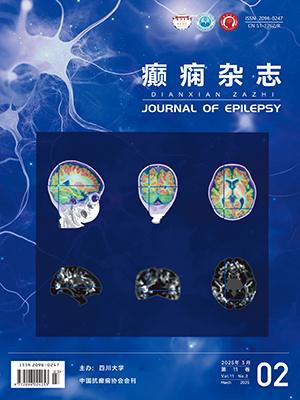| 1. |
Ryvlin P, Nguyen DK. Insular seizures and epilepsies: ictal semiology and minimal invasive surgery. Curr Opin Neurol, 2021, 34(2): 153-165.
|
| 2. |
Kwan P, Arzimanoglou A, Berg AT, et al. Definition of drug resistant epilepsy: consensus proposal by the ad hoc Task Force of the ILAE Commission on Therapeutic Strategies. Epilepsia, 2010, 51(6): 1069-1077.
|
| 3. |
中国医师协会神经外科分会功能神经外科学组, 中国抗癫痫协会, 国家神经外科手术机器人应用示范项目专家指导委员会. 立体定向脑电图引导射频热凝毁损治疗药物难治性癫痫的中国专家共识. 中华医学杂志, 2021, 101(29): 7.
|
| 4. |
Wieser HG, Blume WT, Fish D, et al. ILAE Commission Report. proposal for a new classification of outcome with respect to epileptic seizures following epilepsy surgery. Epilepsia, 2001, 42(2): 282-286.
|
| 5. |
Isnard J, Guénot M, Sindou M, et al. Clinical manifestations of insular lobe seizures: a stereo-electroencephalographic study. Epilepsia, 2004, 45(9): 1079-1090.
|
| 6. |
Bouthillier A, Weil AG, Martineau L, et al. Operculoinsular cortectomy for refractory epilepsy. Part 1: Is it effective? J Neurosurg, 2019, 48: 1-10.
|
| 7. |
Wang H, McGonigal A, Zhang K, et al. Semiologic subgroups of insulo-opercular seizures based on connectional architecture atlas. Epilepsia, 2020, 61(5): 984-994.
|
| 8. |
Singh R, Principe A, Tadel F, et al. Mapping the Insula with Stereo-electroencephalography: the emergence of semiology in insula lobe seizures. Ann Neurol, 2020, 88(3): 477-488.
|
| 9. |
Wang X, Hu W, McGonigal A, et al. Electroclinical features of insulo-opercular epilepsy: an SEEG and PET study. Ann Clin Transl Neurol, 2019, 6(7): 1165-1177.
|
| 10. |
Proserpio P, Cossu M, Francione S, et al. Insular-opercular seizures manifesting with sleep-related paroxysmal motor behaviors: a stereo-EEG study. Epilepsia, 2011, 52(10): 1781-1791.
|
| 11. |
Levy A, Yen Tran TP, Boucher O, et al. Operculo-insular epilepsy: scalp and intracranial electroencephalographic findings. J Clin Neurophysiol, 2017, 34(5): 438-447.
|
| 12. |
Dylgjeri S, Taussig D, Chipaux M, et al. Insular and insulo-opercular epilepsy in childhood: an SEEG study. Seizure, 2014, 23(4): 300-308.
|
| 13. |
Kerezoudis P, Singh R, Goyal A, et al. Insular epilepsy surgery: lessons learned from institutional review and patient-level meta-analysis. J Neurosurg, 2021: 1-13.
|
| 14. |
Mullatti N, Landre E, Mellerio C, et al. Stereotactic thermocoagulation for insular epilepsy: Lessons from successes and failures. Epilepsia, 2019, 60(8): 1565-1579.
|
| 15. |
戴阳, 王逸鹤, 安阳, 等. 立体定向脑电图引导下立体交叉射频热凝毁损治疗药物难治性岛叶癫痫的安全性及有效性观察. 中华医学杂志, 2021, 101(41): 3386-3392.
|





 Baidu Scholar
Baidu Scholar